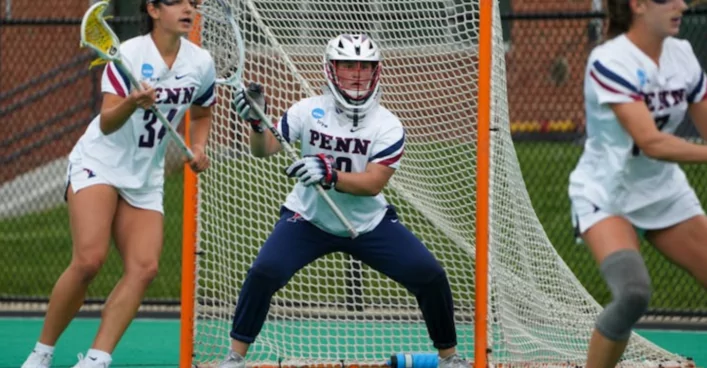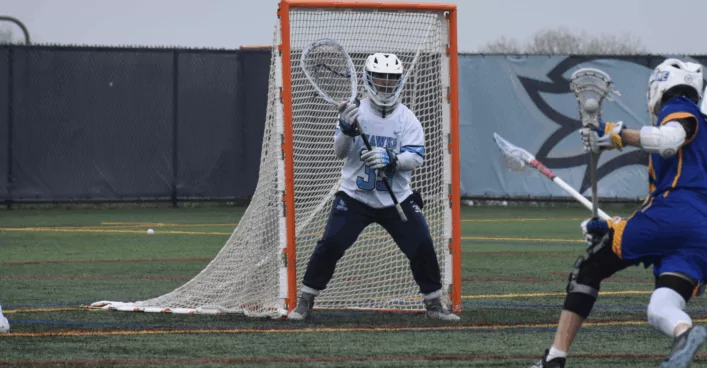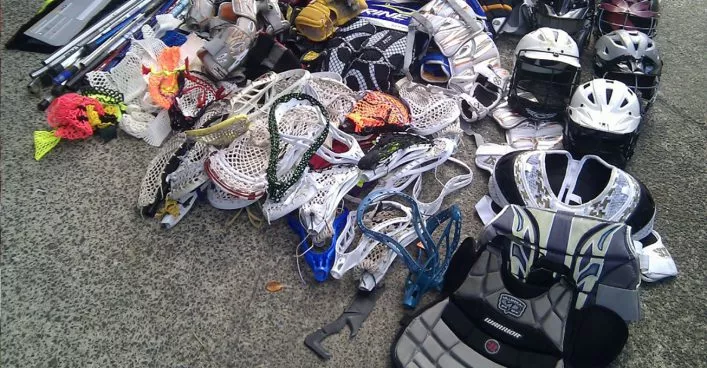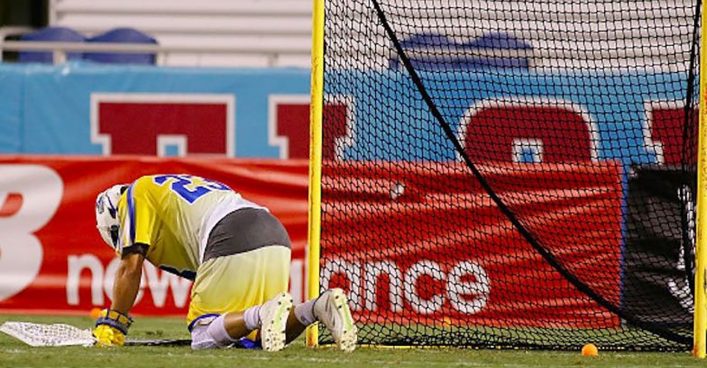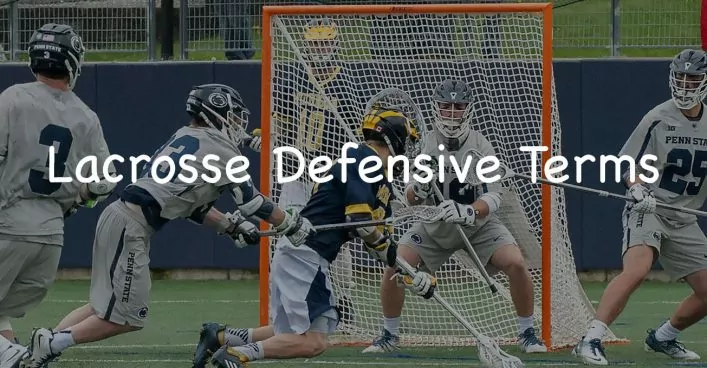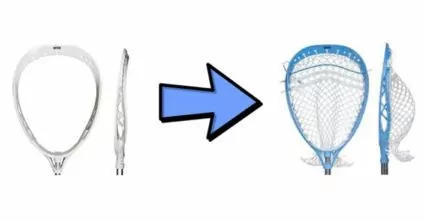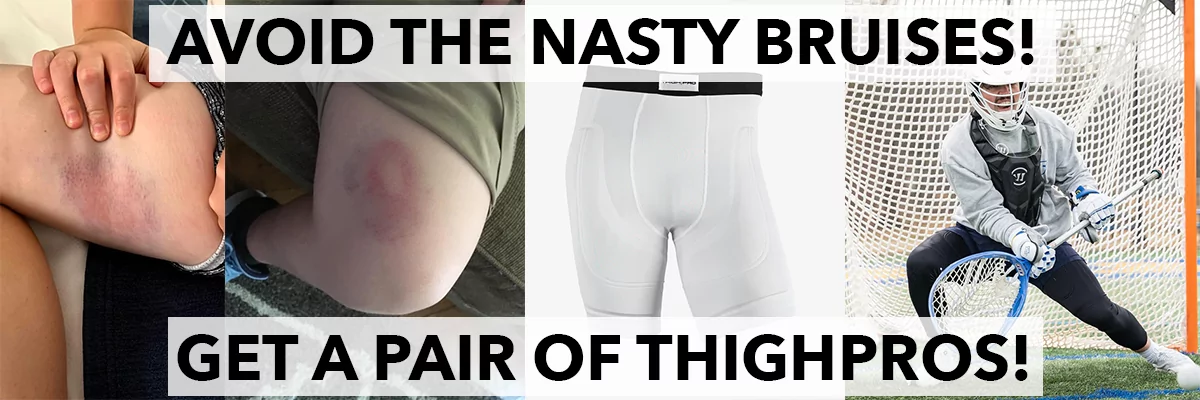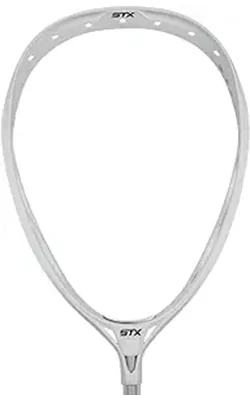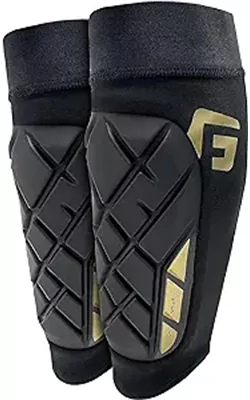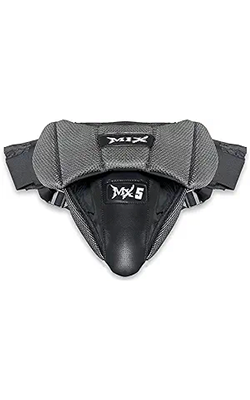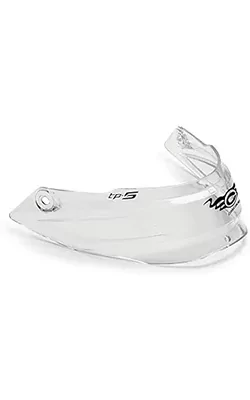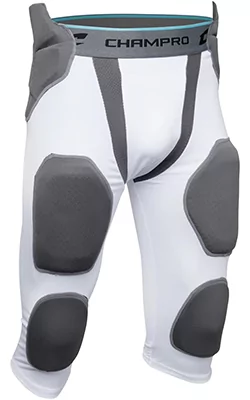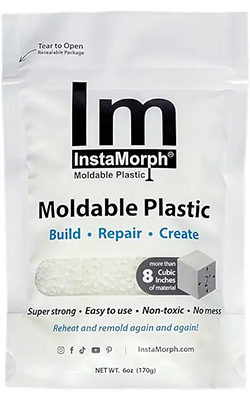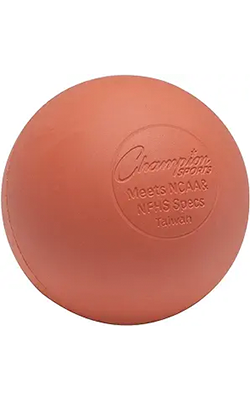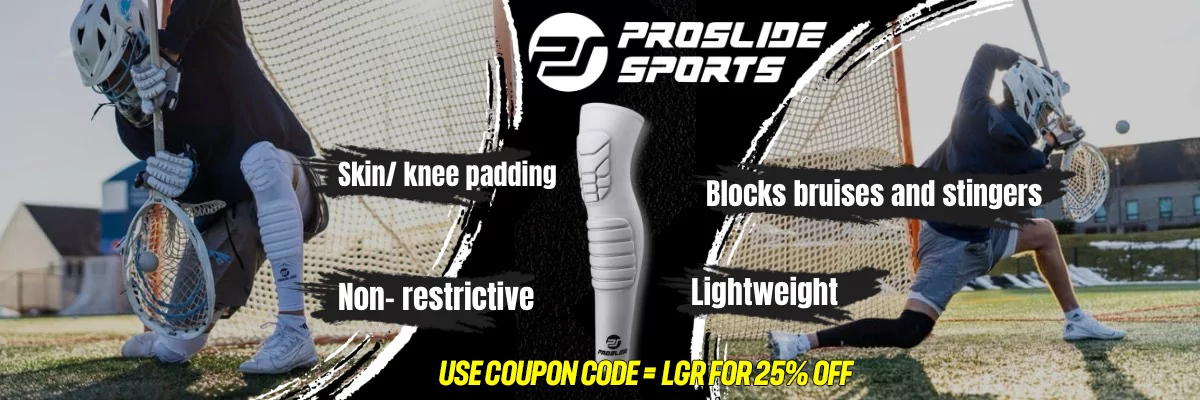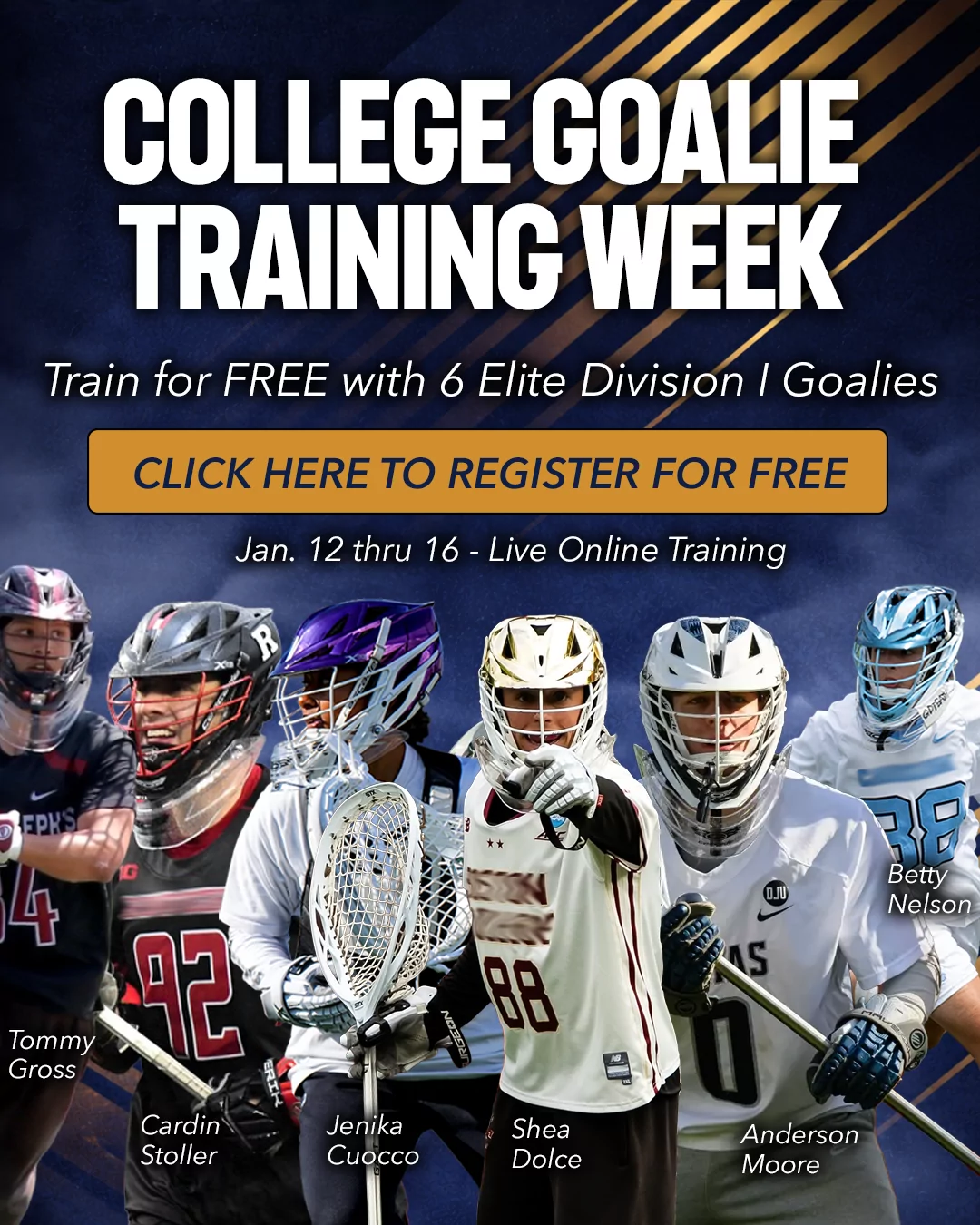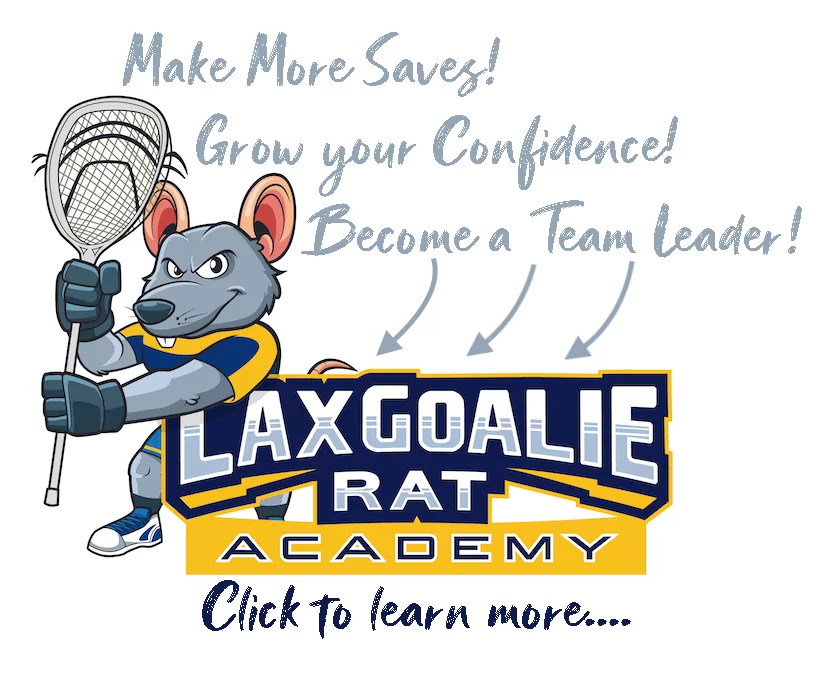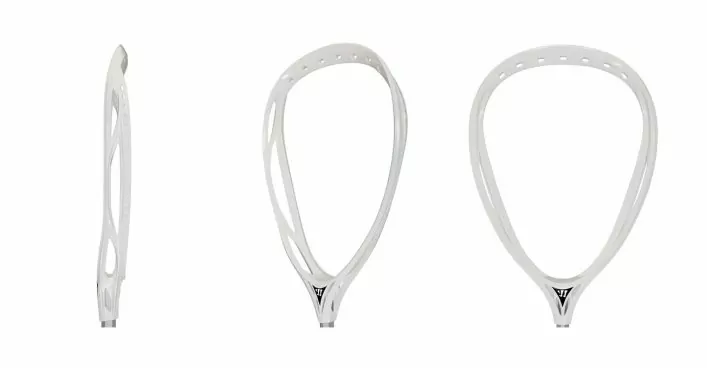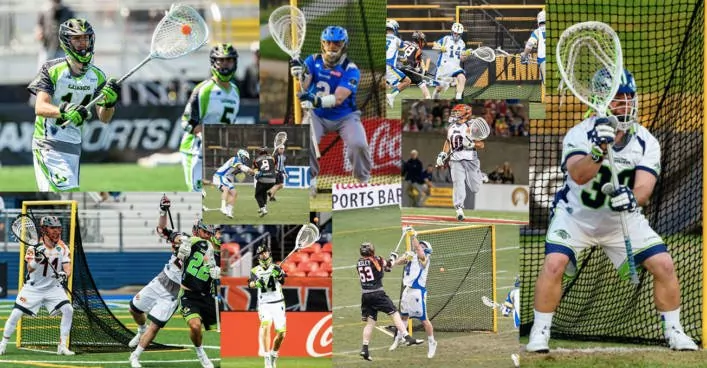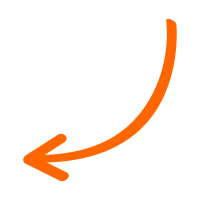For the majority of lacrosse athletes, it’s currently the off-season. Cruising through the lacrosse forums you’re likely to find lacrosse players and goalies searching for advice on how to get bigger, stronger, and faster.
Bigger, stronger, faster. Bigger, stronger, faster.
However a key element of top physical performance that nobody seems to be talking about is flexibility.
In an interview with MLL goalie great Jordan Burke he credited yoga – of all things – with drastically improving his lacrosse goalie game.
I asked my brother-in-law, a Body Conditioning & Corrective Exercise Specialist – Coach Rob (author of the amazing lacrosse goalie workout) to write up his thoughts on flexibility and put together some stretching routines for lacrosse athletes.
Playing such a dynamic position, like those in the sport of lacrosse, requires coverage of a considerable amount of space and change in direction in a spilt second.
Every year endless hours are dedicated to “getting bigger, faster, and stronger”. Achieving this is all made possible by maintaining flexibility throughout any training program or season.
Flexible muscles allow an athlete to react and respond effectively. That means flexibility equals saves for lacrosse goalies.
This also reduces the risk of injury by allowing for better circulation and less muscle imbalance.
There are a few techniques I like to implicate while creating better range of motion for the body of an athlete and specifically for that of a lacrosse goalie.
These include myofacial release, active stretch, and assisted static stretching.
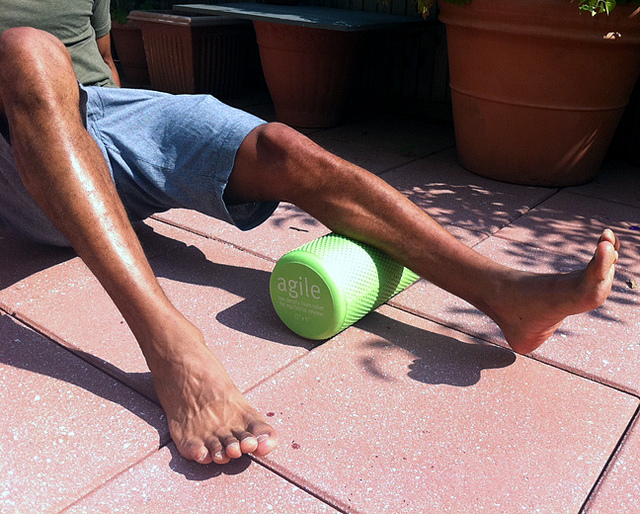
Self myofascial release is a sports medicine therapy that is used to treat muscle immobility and pain by relaxing contracted muscles, improving blood and lymphatic circulation, and stimulating the stretch reflex in muscles.
Self myofacial release is a good way to increase circulation and allow your muscles to fully stretch.
This will require a foam roller. If you don’t have one, pickup one on Amazon (I recommend a basic one like this) or at a local sports store.
Place the foam roller on the ground and roll your muscles over the top.
Make sure not to roll directly over your joints.
Muscles to include in foam rolling include:
- Calves
- Tibialis (outer part of calves)
- Quadriceps
- Hamstrings
- Abductors (buttocks and lateral hip)
- Adductors (groin)
- Hip flexors
- Piriformus (upper buttocks)
- Mid-back
- Lats
Even rolling the sole of each foot will promote ankle flexibility. This can be done with a lacrosse ball.
The goal is to eliminate any knots and/or muscle tightness. This makes stretching more effective and promotes better flexibility.
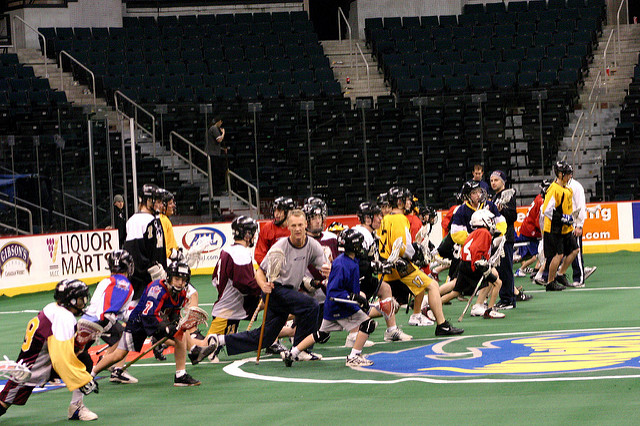
Active stretching is most effective prior to a workout or competition.
The athlete will be moving in and out of stretches, covering range of motion for the body in all planes. This more closely mimics the movements a lacrosse goalie would make while performing.
For example, while walking forward, pause every third step and pull your knee to your chest (alternate).
It is important to establish an active-stretch routine which shouldn’t change much, if at all, during the season.
Additionally, actively stretching will expend less energy than holding a stretch in place for an extended period of time.
For a lacrosse goalie, or any lacrosse athlete, I would recommend this pre-game or pre-practice active stretching program:
Phase 1
For each exercise in Phase 1 walk forward and perform stretch approximately every 3rd step. Walk forward for about 10 yards with stretches then follow with a light sprint (1/2 speed) for about 10 yards.
- Start with a warm up jog of a full length of the field and back
- Knee huggers (hamstrings): Hug each knee to the chest, moving hips forward
- Flamingos (quads, hips, lats, shoulders): Cross leg behind, grab foot with opposite hand. Simultaneously reach overhead with other hand. Hips forward.
- High kicks (hamstrings, hips): Kick leg up and across the body towards raised hand on opposite side. Let leg free fall (lightly) backwards.
- Lateral slides (groin, hips, knees, ankles, lower back): *visualize a line of hurdles* move laterally while ducking under each hurdle.
- Heel scoops (hamstrings, lower back): Extend leg out in front with heel on the ground. Reach with both hands towards the heel. Come “through the leg” with arms all the way above the head.
- Toe touches (hamstrings, core): On one foot, reach down and across the body towards the foot on opposite side. Simultaneously reaching behind with unplanted leg.
Phase 2: Full body warm up
Forward lunges with torso rotation
Rotate upper body towards side of front leg during lunge motion.
Power skips
Skip and explode in controlled motion
Sprints at 75% speed
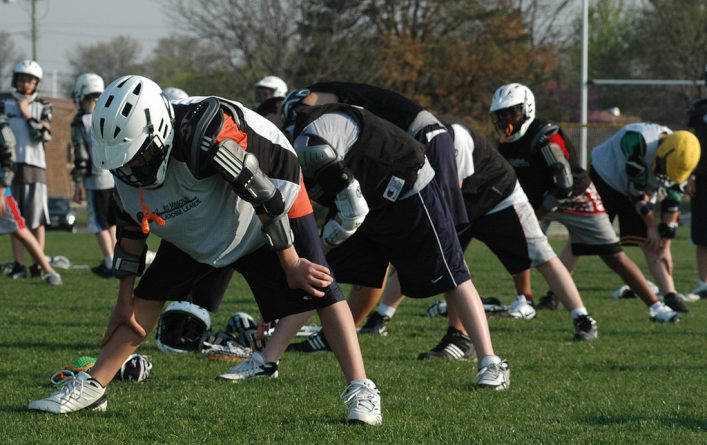
Static stretching involves stretching muscles and holding the stretch in place.
This is the typical type of stretching most athletes perform with their teams prior to games and practices.
A static stretch can be held anywhere from 15-60 seconds and the focus should be on calm deep breathing.
This method is much more effective with the assistance from a trainer and/or conditioning specialist.
When training alone, a towel or yoga strap can be very effective.
Static stretching can be used before and after training/competition, but there are some things to keep in mind.
Static stretching expends energy when held for too long.
Before competition stretches should be held for no longer than 15-20 seconds. Post training/competition, stretches may be held for up to 60 seconds.
At this point an exhausted athlete has built up lactic acid in the muscles which creates the “deep burn” leading to tightness and soreness.
Here is an easy 6-8 minute post-game stretching routine for lacrosse athletes:
- Hamstrings
- Pigeon stretch
- Hip stretches
- Calves
- Doorway shoulder stretch
- While laying flat on back, cross leg over the body stretch the lower back
Hold each stretch for 60 seconds.
Static stretching will help “flush” the muscles and allow for proper circulation and shortened recovery time.
Flexibility is as important to an athlete’s strength and conditioning program as any other aspect.
More flexible muscles allow for consistent progression of an athlete.
Muscles will grow and become stronger. Injuries will be less frequent and recovery time will shorten considerably.
For those lacrosse goalies looking for an edge or looking for a method to avoid injuries, I offer you this: flexibility.
In a world of bigger, stronger, faster, it is actually flexibility that is equally as important, if not more so.
Besides making you a better lacrosse athlete and a better goalie, a focus on flexibility also has many health advantages in your normal off-the-field life as well.
Until next time! Coach Damon
Any questions on flexibility for lacrosse goalies? Leave a comment down below. Header photo from Roanoak College.
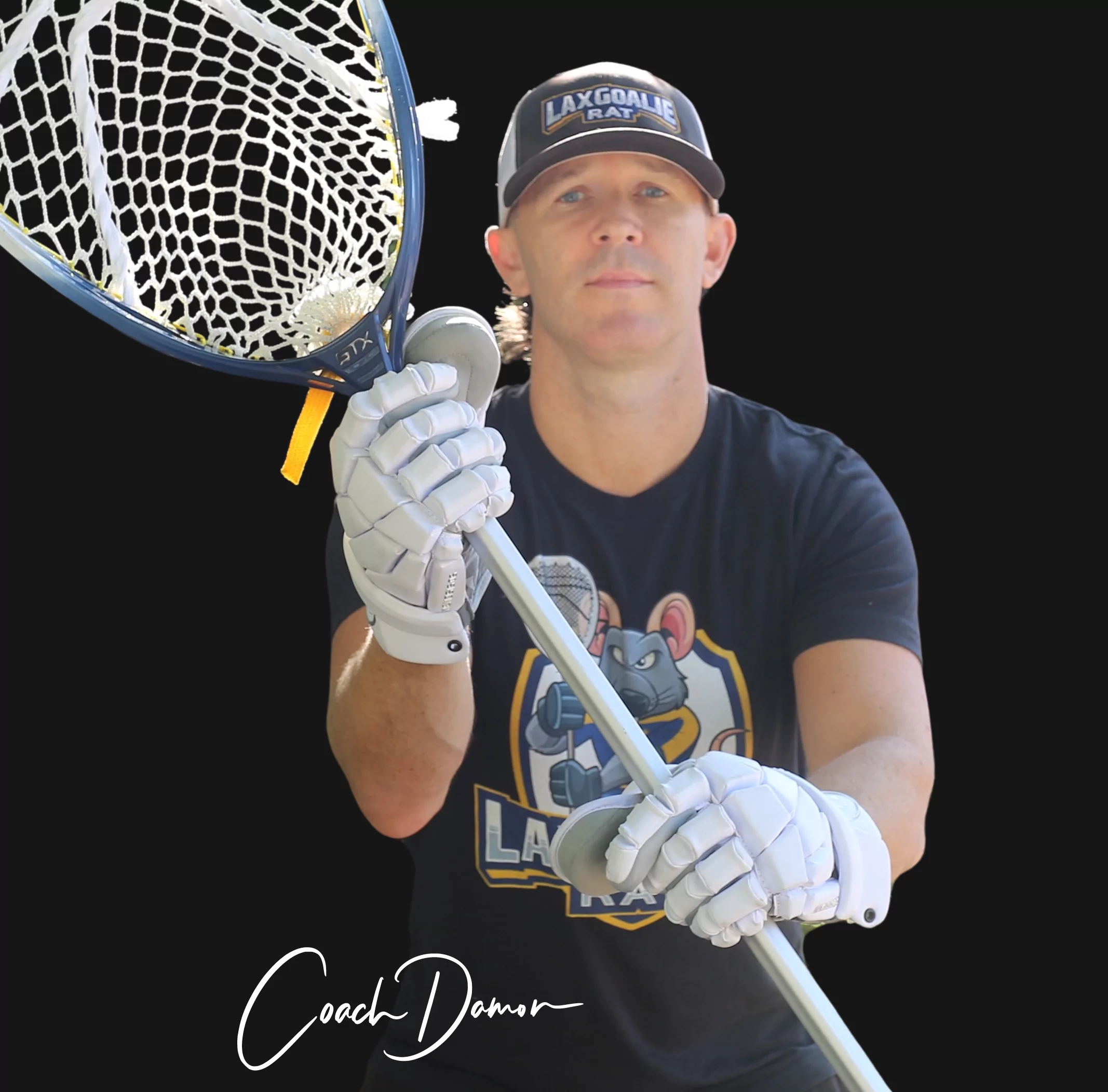







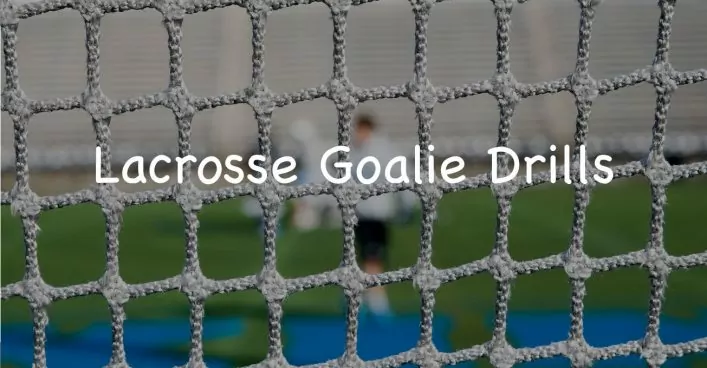 14 Amazing Lacrosse Goalie DrillsAug. 1, 2024
14 Amazing Lacrosse Goalie DrillsAug. 1, 2024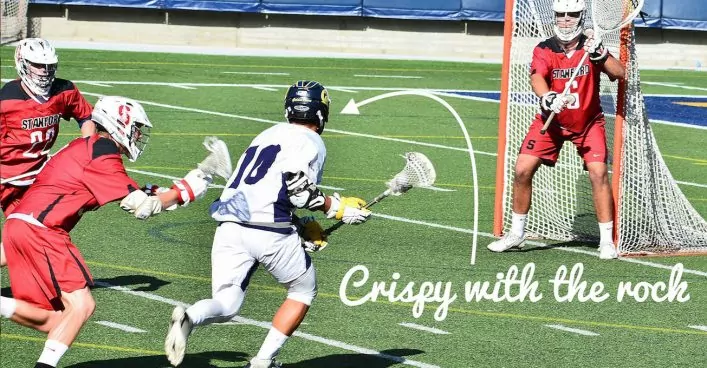 Quick Guide To Lacrosse Slang TermsApril 14, 2025
Quick Guide To Lacrosse Slang TermsApril 14, 2025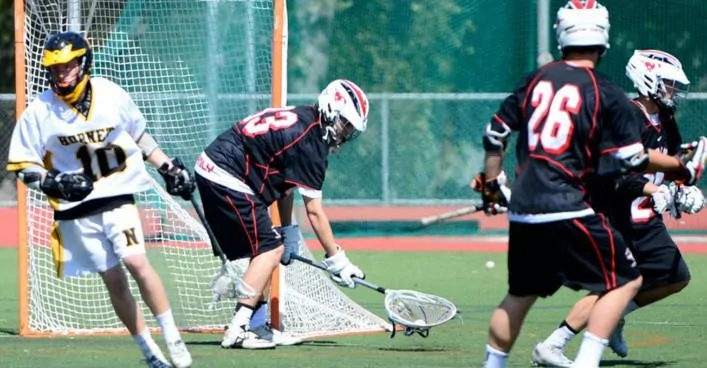 Lacrosse Goalies Rules To KnowJune 28, 2022
Lacrosse Goalies Rules To KnowJune 28, 2022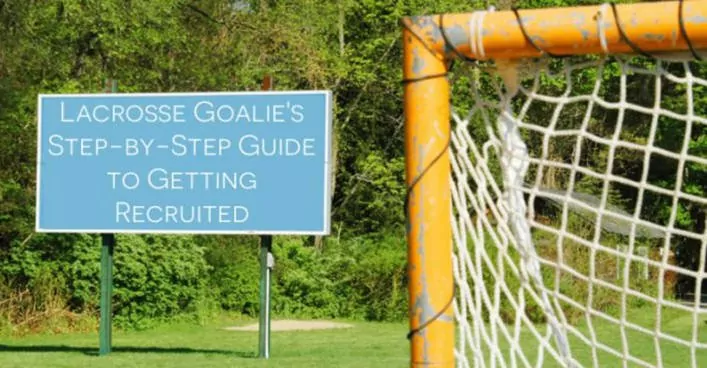 Lacrosse Goalie Step-by-Step Guide to Getting RecruitedFebruary 6, 2022
Lacrosse Goalie Step-by-Step Guide to Getting RecruitedFebruary 6, 2022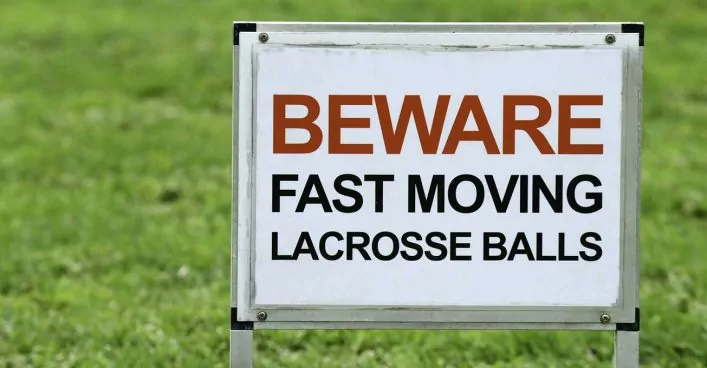 18 Lacrosse Goalie Drills to Improve Your GameApril 24, 2025
18 Lacrosse Goalie Drills to Improve Your GameApril 24, 2025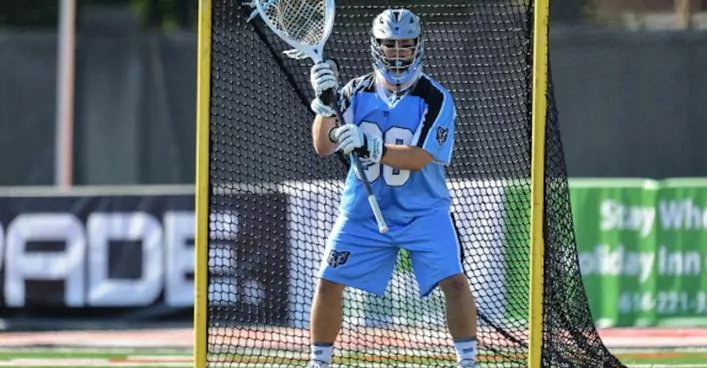 7 Elements of a Great Lacrosse Goalie StanceAug. 1, 2020
7 Elements of a Great Lacrosse Goalie StanceAug. 1, 2020 12 Lacrosse Goalie Tips To Take Your Game to the Next LevelSeptember 10, 2024
12 Lacrosse Goalie Tips To Take Your Game to the Next LevelSeptember 10, 2024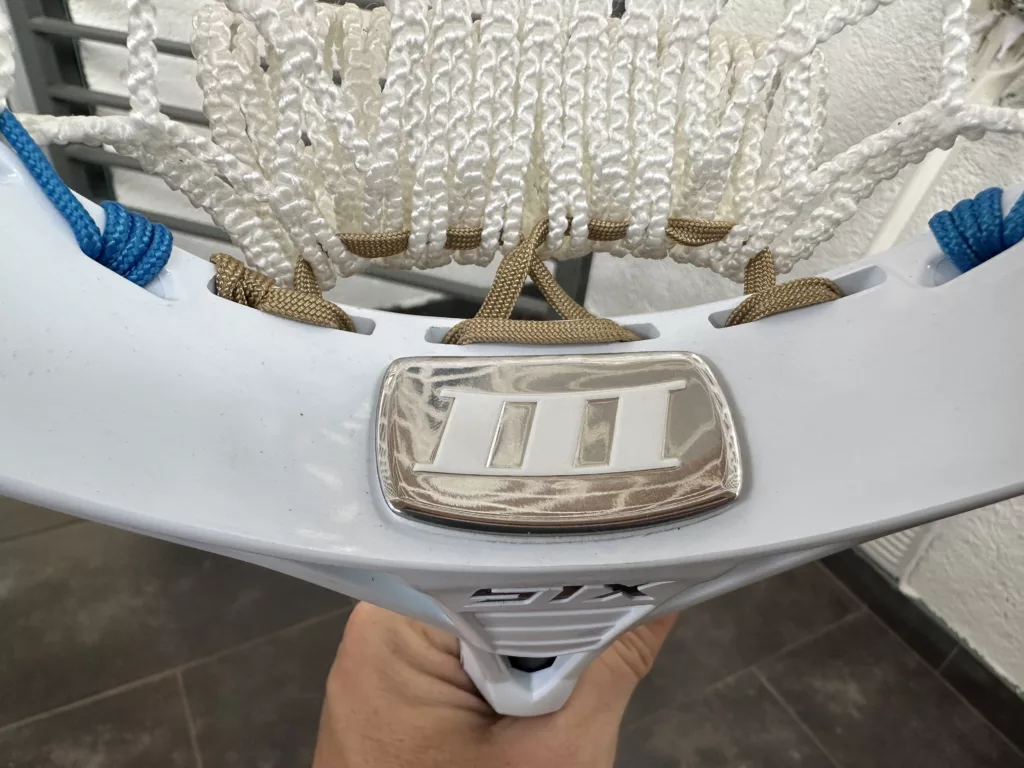 STX Eclipse 3 Goalie Head ReviewApril 24, 2025
STX Eclipse 3 Goalie Head ReviewApril 24, 2025 Lacrosse Goalie WorkoutAug. 12, 2019
Lacrosse Goalie WorkoutAug. 12, 2019 The Basics of Making a SaveJune 29, 2021
The Basics of Making a SaveJune 29, 2021

